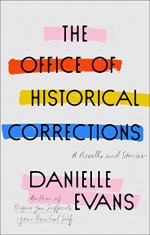|
This section contains 1,042 words (approx. 3 pages at 400 words per page) |

|
Point of View
Evans’ book incorporates different points of view and types of narration throughout its stories. “Happily Ever After” (1), “Richard of York Gave Battle in Vain” (18), “Boys Go to Jupiter” (50), and “Anything Could Disappear” (132) are all narrated in the third person and told mainly from the perspective of one person. “Alcatraz” (82) is told in the first person from the point of view of Cecilia, who also narrates her mother’s perspective in a flashback. “Why Won’t Women Just Say What They Want” (114) is written through a third-person omniscient narrator who has access to the points of view of many of the people who have been wronged by a famous artist. “The Office of Historical Corrections” (162) is narrated in the first person from Cassie’s point of view.
These various perspectives serve distinct narrative purposes that allow Evans to make certain political points or pinpoint certain realities...
|
This section contains 1,042 words (approx. 3 pages at 400 words per page) |

|




